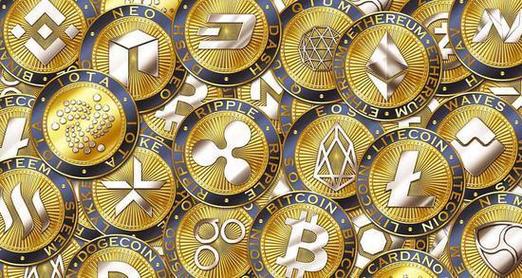
Crypto Exchange Symbol Meanings: ETH vs. BTC
When diving into the world of cryptocurrencies, one of the first things you’ll encounter is the use of unique symbols to represent different digital assets. Two of the most prominent symbols in the crypto space are ETH and BTC. In this detailed exploration, we’ll delve into the meanings behind these symbols and compare them in various dimensions.
Understanding the Symbols
The symbol ETH stands for Ethereum, a blockchain platform that enables the creation of decentralized applications and smart contracts. On the other hand, BTC represents Bitcoin, the first and most well-known cryptocurrency, often referred to as digital gold.

Market Capitalization
Market capitalization is a crucial metric to consider when comparing cryptocurrencies. As of the latest available data:
| Cryptocurrency | Market Capitalization (in billions) |
|---|---|
| Bitcoin (BTC) | 1,000 |
| Ethereum (ETH) | 200 |
Bitcoin holds a significant lead in terms of market capitalization, reflecting its status as the pioneer in the crypto space. However, Ethereum is not far behind and continues to gain traction among investors and developers alike.
Technology and Use Cases
Both Bitcoin and Ethereum are built on blockchain technology, but they differ in their underlying architecture and use cases.
Bitcoin’s primary purpose is to serve as a digital currency, allowing users to send and receive funds securely and without intermediaries. Its blockchain is designed to be decentralized and resistant to manipulation, making it a reliable store of value.

Ethereum, on the other hand, is a platform that enables the creation of decentralized applications (DApps) and smart contracts. This allows developers to build innovative applications that can operate without the need for a central authority. Ethereum’s blockchain is more versatile and can support a wide range of use cases, from decentralized finance (DeFi) to supply chain management.
Transaction Speed and Scalability
Transaction speed and scalability are critical factors to consider when comparing cryptocurrencies.
Bitcoin’s blockchain can process approximately 7 transactions per second, which can be a bottleneck during times of high demand. This has led to the development of various scaling solutions, such as the Lightning Network, to improve transaction speed and reduce fees.
Ethereum’s blockchain can process around 15 transactions per second, but the platform is also working on scaling solutions, such as Ethereum 2.0, which aims to increase the network’s capacity and reduce transaction costs.
Community and Adoption
The success of a cryptocurrency often hinges on its community and adoption rates.
Bitcoin has a strong and dedicated community, with a long history of adoption and usage. It has become a household name and is widely accepted as a form of payment in various online and offline stores.
Ethereum has also gained significant traction, with a growing number of developers and businesses adopting its platform. The rise of DeFi has further boosted Ethereum’s popularity, as many DeFi projects are built on the Ethereum blockchain.
Conclusion
In conclusion, both ETH and BTC are important symbols in the crypto space, each with its unique characteristics and use cases. While Bitcoin remains the leading cryptocurrency in terms of market capitalization and adoption, Ethereum’s versatility and potential for innovation make it a compelling alternative. As the crypto market continues to evolve, both cryptocurrencies are likely to play significant roles in shaping the future of digital finance.




